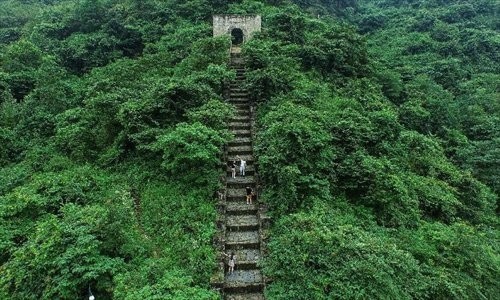This particular good news may increase the number of tourist arrival in three provinces.
The Paris-based United Nations Educational, Scientific and Cultural Organization (UNESCO) approved on July 4 the inclusion of Tusi Sites on the World Heritage List, making it the 48th one for China.
“Boasting outstanding universal value” according to UNESCO, the Hailongtun in Guizhou Province, the Laosicheng Site in Hunan Province, and the Rongmei and Tangya Sites in Hubei Province comprise the Tusi Sites. UNESCO said that they stand as a “unique witness” to the ancient political system known as the Tusi system.
The Tusi system was ancient China’s native chieftain system. A tusi was a tribal chief appointed by the emperor as the ruler of an ethnic group.
The inscription of Tusi Sites on the prestigious UNESCO list is the most recent one for China.
Silk Roads: the Routes Network of Chang'an-Tianshan Corridor and the Grand Canal aka Beijing-Hangzhou Grand Canal made it to the list in 2014. The Chang'an-Tianshan Corridor covers areas in China, Kazakhstan and Tajikistan, and the Grand Canal is the longest in the world at 1,115 miles.
With its ruins still standing at Longyanshan Mountain in the Huichuan District of Zunyi, the Hailongtun aka Hailongtun Castle/Fortress is listed in the country’s Major National Historical and Cultural Sites. Erected in 1257 and burned down in 1600 by attacking Ming army (Ming Dynasty, 1368-1644), it was Yang Ying-long’s official residence as a Tusi until the time of his death after hanging himself during the siege.
The Laosicheng Site in Sicheng Village, Lingxi Town of Yongshun County, is a picturesque mountain city teeming with ancient temples and other structures. It also has an ancient cemetery where the Tusi were laid to rest.
The Rongmei Site in Pingshan Village, Rongmei Town of Hefeng County, features well-preserved mansions. The Tangya Site in Tangyasi Village, Jianshan Town of Xianfeng County, has 36 courtyards.
UNESCO said that the Tusi Sites “took great advantage of the natural geographical conditions and landscape in site selection, planning and construction.”
China has 55 more sites placed under UNESCO’s Tentative List.



























